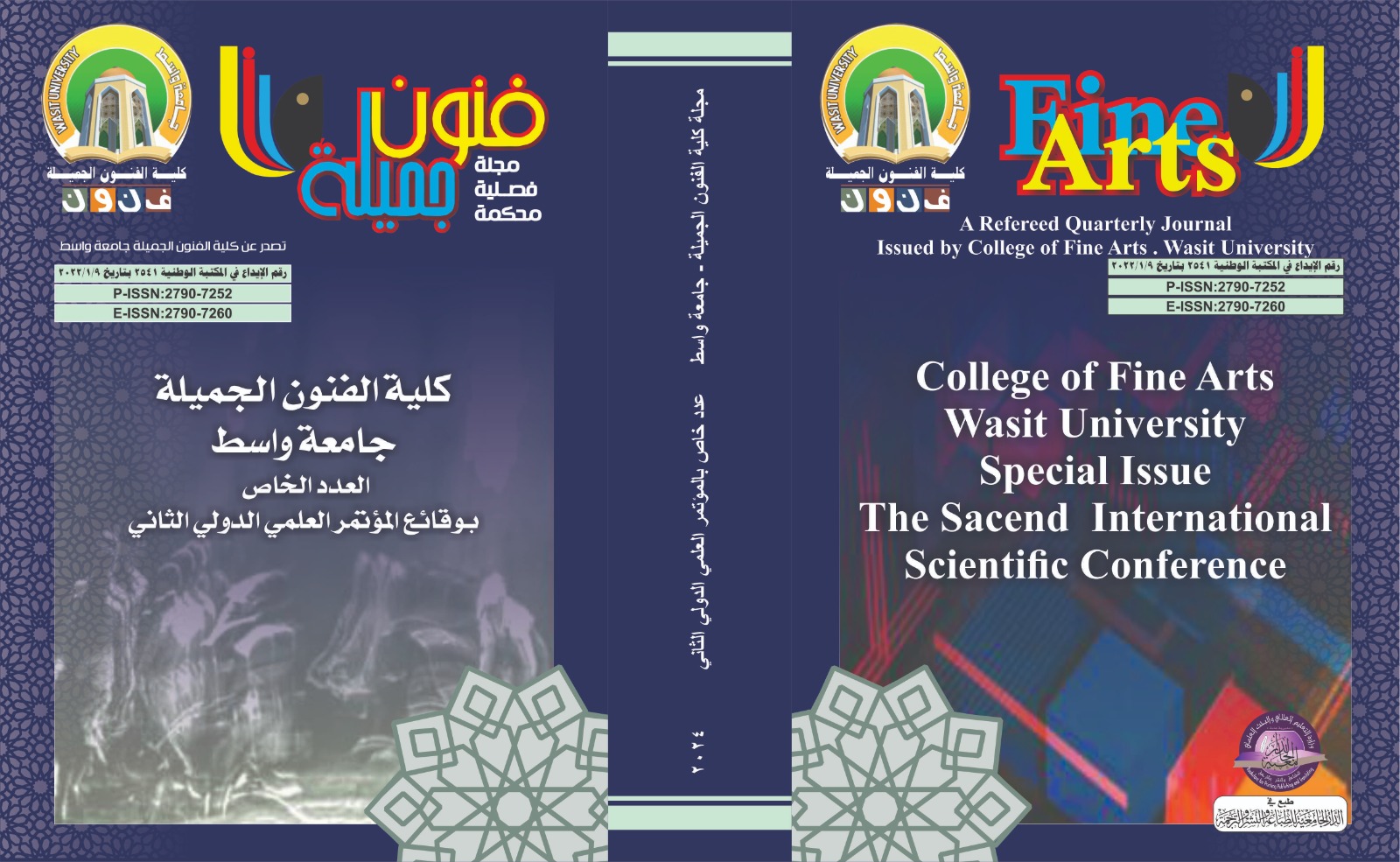Abstract
Space is considered one of the most important elements of artistic formation because it contains the elements, absorbs them, and contributes to defining their features. In the art of sculpture and architecture, space constitutes the first element, the basis, and the actor in completing the artistic image of any sculptural work, especially in the contemporary plastic arts. Rather, it is an element that is difficult to clarify except in the case of the presence of something with three dimensions, and it is not possible to perceive form without a sense of space. Interior design, architecture, and sculpture move in one three-dimensional direction, but with a difference in scale, interior space and architecture are created for habitation, while sculpture may move away from this concept. Architecture is the result of an internal space that meets the individual's functional and aesthetic requirements, while the sculptor satisfies the individual's sensory and aesthetic requirements more than they are functional. The process of merging architecture and sculpture carries within it directives related to the directives of the contemporary sculptor, and thus pours into the interior space to be part of the overall composition of that architecture. Integration between the interior space and the sculptural architecture is considered the goal of the designer. This integration occurs either at the level of the whole, which is the goal of the designer, or at the level of the part. Thus, the design has achieved part of the integration, not the whole. Just as designs have risen to complete integration, they have risen to successful designs, whether in form or The content or both. The current research contains four chapters. The first chapter includes the research problem, its importance, and the need for it. The research problem lies in answering the following questions: 1- What is the mechanism of the design process that must be under the pressure of the conflict between the relationship between space in interior design and contemporary architecture? 2- What is the importance of the hidden relationship between two basic effective structures in interior design, which are the functional structure and the aesthetic structure. The goal of the research was determined by shedding light on revealing the nature of the relationship between the aesthetics of interior space and contemporary architecture. As for the limits of the research: it included studying the aesthetics of space in interior design and contemporary architecture. With the time period from (1956-2005 AD), it included contemporary architectural projects implemented in Italy, the Czech Republic, Spain, and the United States of America. The terms mentioned in the title of the current research were also defined. The second chapter/theoretical framework included two sections. The first section dealt with space and its relationship to contemporary interior design. The second section dealt with space in modern European formation (architecture - sculpture). The second section concluded with indicators of the theoretical framework. While the third chapter included the research procedures, which included the research community, which is architectural projects for contemporary sculptural architecture implemented in Italy, the Czech Republic, Spain, and the United States of America. It is a purposive sample of (5) models, and the research methodology is the descriptive analytical method. As for the fourth chapter, it includes the results, conclusions, recommendations, and proposals. The most important results reached by the researcher are: 1- The beauty of space for interior design in contemporary architecture is achieved as a result of a series of visual perceptions, and all perceptions of space depend on a connection between the perceiver and the perceived points, as in all research models. 2- The image of space is represented by the rigor of expression in the interior design of contemporary architecture, and that this revolution has a mechanism for advancing knowledge in design thought, which reflects the stages of the changing debate for functional structure within this context. As in Model (1,2,3,5). As for the conclusions that were reached To the researcher: The scientific (engineering, technical, and digital) and artistic intersection of contemporary architecture has accomplished enormous, great, and astonishing works that would not have been achieved without this synergy between these sciences and arts. Based on the results and conclusions that emerged, the researcher recommends the following: - 1- The artistic designs must be prepared in the form of different patterns, shapes and colors that derive their value from society and aesthetics that are compatible with the nature of contemporary arts. The researcher suggests conducting the following studies: 1- The duality of the aesthetic and the functional in contemporary sculpture and architecture (a comparative study). The research ended with the most important sources in Arabic and English.

